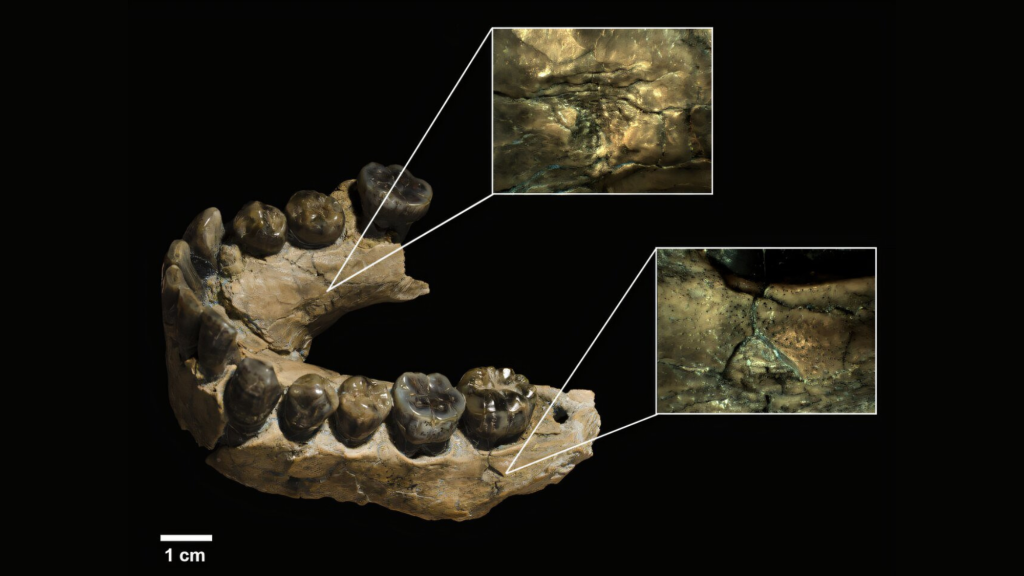Most paleobiologists believe humanity truly began around 2 million years ago with a species known as Homo habilis. Part of this evolutionary demarcation stems from the theory that the early hominins were some of the first primates to consistently shift from the role of “prey” to that of “predator.” But according to an analysis of tiny injuries on two fossilized H. habilis jaw fragments, some researchers now believe our ancestors required a bit more time to ascend the food chain. The evidence is explored in a study published in the Annals of the New York Academy of Sciences.
A team at Spain’s University of Alcalá examined small tooth marks on the H. habilis fossils originally recovered from the Olduvai Gorge in Tanzania. To do this, they first trained an advanced machine learning model on an image library of nearly 1,500 photos of bite indentations made by present-day carnivores such as lions, crocodiles, wolves, and hyenas. They then tasked their program with analyzing photos of the H. habilis mandibles to see if the wounds corresponded to any of the dataset’s predators. Given each tooth pit’s triangular shape, the system concluded with over 90 percent probability that the teeth belonged to an ancient species of leopard.
“The implications of this are major, since it shows that H. habilis was still more of a prey than a predator,” the study’s co-authors wrote. “It also shows that the trophic position of some of the earliest representatives of the genus Homo was not different from those of other australopithecines.”
Although the analysis focused on only two H. habilis specimens, additional contextual clues further support this theory. According to researchers, the early hominins would display far more damage if their bodies were scavenged by something like a hyena’s bone-crushing jaws.
“This suggests that H. habilis was unable to fend off top predators from their kills,” argued the authors.
This isn’t to say that humanity’s ancestors weren’t impressive in other ways. There is still evidence linking H. habilis to some of the first uses of stone tools such as animal butchery. But if more gnawed H. habilis are ever discovered, it would only further indicate that the hominins weren’t quite the conquerors of their domain just yet.

